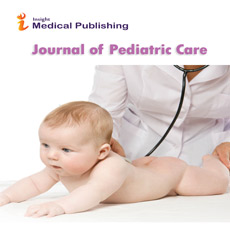Upper Gastrointestinal Bleed (UGIB); Hemospray, an essential tool in the Armamentarium
Vignesh Balasubaramaniam
Abstract
Upper gastrointestinal bleed (UGIB) is a common presentation to the emergency department and accounts for approximately 50,000 - 70,000 admissions per year in the UK.Peptic ulcer disease (PUD) remains the most common cause of UGIB in the UK. Hemospray (Cook Medical, Winston-Salem, NC, USA) is an inert powder developed for endoscopic haemostasis. We aim to appraise the outcomes for UGIB where hemospray was used during the initial endoscopic therapeutic intervention.
In this retrospective study from March 2018 to December 2020, cases of severe UGIB intervened with hemospray during primary presentation were identified via HICCS, an online database of endoscopy procedures. A detailed analysis of the demographics and outcome measures relating to the procedure, anatomical site of intervention, re-bleeding, and 30-day mortality were collected and interpreted.
20 patients with severe UGIB were identified, where hemospray was used to control the bleeding when other modalities such as Adrenaline injection, Endoclip and Gold probe application failed to stop the bleeding. Among this population, the mean age was 73 years, ranging between 61 to 98 years. There were 14 male patients (70%) in this cohort. Majority of the therapeutic intervention site was at the duodenum (n = 14) accounting for 70 % of the patients, followed by stomach in 25 % (n = 5) and oesophagus (n = 1) in 5%. Causes for the severe UGIB were duodenal ulcer in 12(60%), gastric ulcer in 2(10%), gastric malignancy in 2(10%), Dieulafoy lesion in 1(5%), metastatic duodenal tumour in 1(5%), Angiodysplasia in 1(5%) and severe reflux oesophagitis in 1(5%). Hemospray was successful in achieving initial haemostasis in all cases except in one case of massive haemorrhage with poor view of the bleeding site in duodenum where the bleeding could not be stopped. Following initial hemostasis, re-bleed occurred in 4 out of 19 patients (21%) who were then managed with best supportive care as treatment escalation was not considered appropriate due to comorbidity. 7 patients (35%) died within 30 days of the procedure out of which four occurred due to re-bleed and three patients died due to other medical causes.
In our experience, Hemospray has proven to be an effective therapeutic intervention in achieving haemostasis in cases of severe UGIB when other endoscopic therapies fail to stop bleeding.
Open Access Journals
- Aquaculture & Veterinary Science
- Chemistry & Chemical Sciences
- Clinical Sciences
- Engineering
- General Science
- Genetics & Molecular Biology
- Health Care & Nursing
- Immunology & Microbiology
- Materials Science
- Mathematics & Physics
- Medical Sciences
- Neurology & Psychiatry
- Oncology & Cancer Science
- Pharmaceutical Sciences
